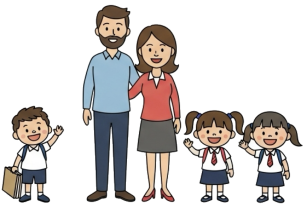
Question More, Action Knowledge.
Remember, at QMAK, we don’t just teach; we empower. We don’t just inform; we inspire. We don’t just question; we act. Become a Gold Member, and let’s unlock your child’s full potential, one question at a time.
 In the age of digital connectivity, information is more accessible than ever before. However, as Cass Sunstein explores in his book “Too Much Information: Understanding What You Don’t Want to Know,” not all information is created equal. Some information can be instrumental in improving our lives, while other information can lead to negative emotions, poor decisions, or even harm.
In the age of digital connectivity, information is more accessible than ever before. However, as Cass Sunstein explores in his book “Too Much Information: Understanding What You Don’t Want to Know,” not all information is created equal. Some information can be instrumental in improving our lives, while other information can lead to negative emotions, poor decisions, or even harm.
As homeschooling parents and educators, it’s essential to understand the different types of information and their potential impact on our teenagers’ well-being. By doing so, we can help them navigate the complex information landscape and make informed decisions about the content they consume.
According to Sunstein, information can have both instrumental and hedonic value. Instrumental value refers to information that allows people to take action and improve their lives, such as learning about healthy eating habits or financial management. Hedonic value, on the other hand, refers to information that provides pleasure or positive feelings, like reading an entertaining article or watching a funny video.
However, information can also have negative effects. Some information can induce negative feelings, such as distress, frustration, or despair. For example, a teenager might feel overwhelmed and anxious after reading about the latest global crisis or a peer’s seemingly perfect life on social media. Sunstein notes that people often make decisions about seeking or avoiding information based on a “bet” about whether the information will be positive or negative, influenced by factors like optimism, loss aversion, and cognitive biases.
In the context of homeschooling, it’s crucial to consider the potential impact of the information we include in our curriculum. While it’s important to expose our teens to a wide range of topics and perspectives, we should also be mindful of the emotional effects of the content we present. For instance, when teaching about sensitive subjects like historical atrocities or environmental challenges, it’s essential to provide a balanced perspective and emphasize the potential for positive change.
Social media is another area where the impact of information on teenagers’ well-being is particularly relevant. Platforms like Instagram and TikTok can provide a sense of connection and entertainment, but they can also contribute to feelings of inadequacy, FOMO (fear of missing out), and anxiety. As Sunstein points out, the curated nature of social media can lead to false inferences and misperceptions, as users may mistakenly believe that others’ highlight reels represent their entire reality.
To help our teens navigate the social media landscape, we can encourage them to think critically about the information they encounter online. This might involve discussing the potential biases and motivations behind the content they see, as well as the emotional impact it has on their well-being. We can also model healthy social media habits ourselves and encourage offline activities that promote real-world connections and self-discovery.
Ultimately, the key to helping our teenagers thrive in the information age is to prioritize their well-being and equip them with the tools to make informed decisions. By understanding the different types of information and their potential impact, we can create a homeschooling environment that fosters critical thinking, emotional resilience, and a healthy relationship with information.
At QMAK, we recognize the importance of navigating the information landscape in a way that promotes the overall well-being of our students. By incorporating insights from books like “Too Much Information” into our approach, we aim to empower our students to become discerning consumers and creators of information, prepared to thrive in an increasingly complex world.

Remember, at QMAK, we don’t just teach; we empower. We don’t just inform; we inspire. We don’t just question; we act. Become a Gold Member, and let’s unlock your child’s full potential, one question at a time.